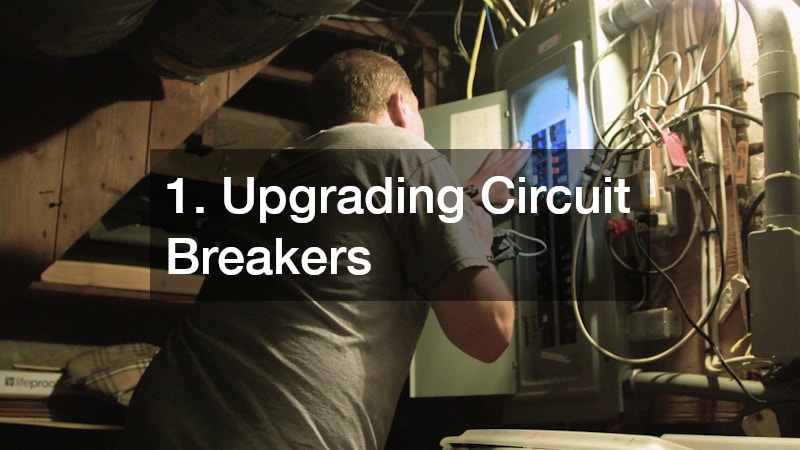5 Essential Electrical Improvements to Future-Proof Your Home
Modern Australian homeowners increasingly recognise that electrical upgrades aren’t just about convenience. They’re about safety, efficiency and long-term value. With homes using more technology than ever before, from smart appliances and entertainment systems to home offices and electric vehicles, outdated wiring and electrical systems can struggle to keep up. Failing to upgrade can lead to inefficiencies, higher energy bills, and even safety hazards such as overloaded circuits or outdated switchboards.
Investing in specific electrical improvements now ensures your property is ready for the demands of today and tomorrow. It also allows you to take advantage of modern technology, sustainable energy solutions, and future home expansions without costly or disruptive retrofits.
Here are five practical upgrades that can help future-proof your home, improve everyday comfort, and increase long-term property value.
1. Upgrading Circuit Breakers

A modern switchboard is the backbone of your home’s electrical system. Older homes may still have outdated fuses or insufficient circuits for today’s power demands. Upgrading to a contemporary switchboard with RCD (residual current device) protection not only enhances safety but also provides enough capacity for future additions, from home office equipment to high-demand appliances.
This upgrade is particularly important if you plan to integrate solar panel installations, as the system must handle additional power input safely. Additionally, a modern switchboard allows for easy isolation of circuits during maintenance or emergencies, reducing risk and inconvenience for your household.
2. Installing LED Lighting and Smart Controls

Replacing old lighting with energy-efficient LED bulbs is an easy way to reduce electricity consumption and improve illumination. Taking it a step further, installing smart lighting controls allows you to schedule lights, adjust brightness, and manage energy use from your phone or smart device.
Smart lighting not only improves convenience but also integrates seamlessly with modern home automation and energy monitoring systems. For example, combining lighting controls with motion sensors or timers can further reduce power usage and enhance security, particularly in outdoor areas or large properties.
3. Adding Dedicated Circuits for High-Demand Appliances
Many homes weren’t originally designed to support today’s range of appliances. Adding dedicated circuits for items like air conditioners, electric ovens, or electric vehicles reduces the risk of overloads and enhances safety.
These circuits are also essential if you plan larger renovations or outdoor works that involve excavator hire. For instance, powering temporary equipment during landscaping or extension projects can be done safely without disrupting your main electrical supply, preventing potential hazards or downtime.
4. Preparing for High-Speed Connectivity

Reliable connectivity is now a necessity. Running dedicated pathways for high-speed internet, including fibre optic installation, ensures your home can support multiple devices, remote work, and entertainment needs without network issues.
Planning electrical improvements with connectivity in mind also allows for seamless integration of smart home devices, security systems, and future technological innovations. By installing proper cabling and outlets now, homeowners avoid costly retrofits and interruptions later.
5. Installing Solar-Ready Wiring and Backup Systems
Preparing your electrical system for renewable energy is one of the smartest long-term upgrades. Installing solar-ready wiring and considering battery backup solutions ensures that solar panel installations can be integrated safely and efficiently.
Beyond cost savings on energy bills, this upgrade provides resilience during power outages and supports environmentally conscious living. Solar-ready wiring also allows for smoother future expansion, whether adding more panels or connecting to emerging energy solutions.
Extra Considerations for Future-Proofing
While these five improvements cover the core of future-proofing your home, there are additional steps that can complement them:
- Surge protection: Installing whole-home surge protection safeguards appliances and devices from voltage spikes, particularly during storms.
- EV-ready infrastructure: With electric vehicles becoming more common in Australia, preparing circuits for charging stations now saves time and money later.
- Energy monitoring systems: Smart meters or home energy monitors provide insights into usage, helping you make informed decisions about upgrades and consumption.
Taking these additional measures ensures that your home is not only prepared for current needs but also adaptable to emerging technologies. Integrating these extra considerations ensures your home remains comfortable, efficient, and resilient in the long term.
Working with Professionals
Electrical improvements should always be handled by licensed professionals. A qualified electrician ensures upgrades comply with Australian safety standards, work efficiently, and integrate with other planned projects.
For larger works, such as excavator hire for landscaping or extensions, coordinating electrical improvements early prevents costly delays and ensures that power and technology needs are fully addressed before construction begins. Likewise, consulting professionals before fibre optic installation or solar panel setups guarantees optimal placement and connectivity.
Future-proofing your home isn’t just about keeping up with trends—it’s about creating a safe, efficient, and comfortable environment that can adapt to modern demands. By implementing these five electrical improvements—and considering complementary measures like surge protection and EV-ready circuits—you’ll enjoy better energy efficiency, enhanced safety, and the flexibility to integrate new technology as your lifestyle evolves. Taking these steps today ensures your home remains ready for whatever upgrades tomorrow may bring, giving you peace of mind and a property that stands the test of time.

